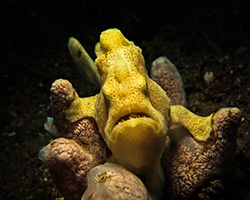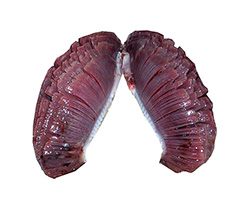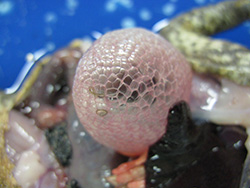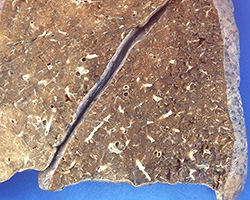Do All Animals Breathe Out Carbon Dioxide
Animate Systems

When we swim or float on water, the air we exhale is important to keep u.s.a. adrift and proceed us alive. Image byMarco De Waal.
You swim out into the lake and flip over onto your dorsum. Your legs dip down into the h2o, and you experience yourself start to sink, and so you lot draw a large breath of air into your lungs and hold information technology. You are floating. The air that you breathe in the lake doesn't simply keep you afloat. It keeps all of your cells working, and it will power your swim back to shore.
Every creature needs oxygenane. Oxygen is used in certain cell parts to change the food molecules in our cells into free energy they can use. Without that energy, our cells (and we) would die. Our cells also make waste material products as they piece of work. These wastes demand to exist removed from the cells and the torso to stay healthy. All animals share these needs for oxygen and waste removal, simply there is a huge diversity of strategies to take care of these needs.
Breathing Basics

About fish ventilate their gills by opening and endmost their mouths. Click for a larger prototype of this frog fish.
Before we delve into these specifics though, let'due south get a few terms straightened out. What we call animate, the motility of air in and out of our lungs, is called ventilation by scientists and doctors. Ventilation is the passage of fluid (for instance, air or water) along surfaces that tin can absorb oxygen (chosen respiratory surfaces).
We breathe air in and out to do this, but some insects pump their bodies to depict in air, and sponges may take special cells with tails (flagella) to make fresh h2o motility over their cells. Some fish use caput muscles and structures to move water over their gills, while others swim with their mouths held open up to become the same outcome. These movements of the body to push air or water into contact with respiratory surfaces is called breathing, ventilation, or external respiration.
Gas exchange, on the other hand, is the actual passage of oxygen from the fluid across the respiratory surfaces and into the body. This is a complicated procedure that involves pressures (both claret pressure and the amount of oxygen present in the blood, called partial force per unit area), movement, and molecular attraction. Finally, once oxygen gets to the cells, they use it to break down molecules similar glucose and release energy. This is what scientists and doctors phone call respiration. And then a human ventilates, merely simply a cell has true respiration.
Dead without Diffusion

Worms breathe through their pare, using diffusion. Click to overstate.
While the complexity of the animate systems across all animals is variable, 1 thing remains abiding. The diffusion of oxygen (and carbon dioxide, as waste) across respiratory surfaces occurs in all of these animals. Sometimes the oxygen is in air, sometimes it is in h2o. Sometimes the fluid (air) is passed forth lung surfaces or sometimes the fluid (water) is passed along gills or other tissues. Let'southward start at the about basic arrangement and look across a select variety of breathing possibilities.
Some animals take in oxygen only through the passive movement of air, called diffusion. Modest animals that have low metabolisms, similar zooplankton, tardigrades, and worms, can get all the oxygen they need from diffusion. However, as size or activeness increases, so exercise oxygen and waste removal needs.
Fish can't get enough oxygen just with improvidence, just they practise not have lungs. They have gills, which blot oxygen directly from the water. Gills and lungs are both respiratory surfaces, where oxygen can exist pulled from the water or air into the blood, and carbon dioxide can be dumped from the blood into the water or air. Fish need to ventilate their gills though, to become plenty oxygen and remove plenty waste. Some invertebrates, like crabs, too have gills.

Fish gills have sets of small finger-like projections that increase their surface expanse. Click for more item.
The more surface area that is available, the more oxygen can be captivated. The best way to increase surface area is to make something very thin and folded many times, and so yous can fit more surface into a small infinite. Gills are structured like this, with many thin, folded filaments to increase the surface area.
Lung Nuts
Larger animals with low metabolisms accept fairly elementary lungs or gills. Spiders and some invertebrates accept what are called "volume lungs." Volume lungs get their proper noun because they wait like a book, opened, with some pages separated. Air fills these spaces, and oxygen tin diffuse into the tissue of the volume lungs. These are essentially similar gills that get oxygen from the air.

Toads and other amphibians and reptiles have basic sack lungs. Click for more detail.
Reptiles and amphibians have lungs that are sometimes chosen sack lungs (which are pretty much what they audio like). They ventilate their lungs by moving ribs and other muscles, but they don't have to breathe very often, every bit they have low energy needs.
The Luxury Lungs of Endotherms
As animals demand more energy, they need more oxygen. They also take more than wastes they need to get rid of. Unproblematic sack or volume lungs won't evangelize plenty oxygen and remove enough wastes for near endotherms.

A await at the within tissue of a mammal's lungs. Click for more detail.
Mammal lungs are very complex, with lots of pocket-size, very sparse pockets that create a large surface area to blot oxygen. Mammal lungs nigh look like fine sponge on the within. The area of a pair of human lungs is almost the same as that of a lawn tennis courtroom!
The well-nigh complex lungs are found in some of the most loftier-performing organisms—birds. Birds have special air sacs and directional flow through a round lung system. With this structure, the torso gets high levels of oxygen because fresh air is ever bravado across the lung tissue, fifty-fifty when birds are animate out. Birds demand this much oxygen so they can get plenty free energy to fuel flying, which is a very free energy expensive way to movement.
As you go through your twenty-four hour period, inhaling and exhaling, your trunk is working to evangelize oxygen to cells. It also works hard to remove waste matter molecules like carbon dioxide from your blood. Y'all probably don't even think about information technology every bit y'all exhale in and breathe out, but your need for oxygen is something you share with all other animals.
i Some research shows there may be some animals (Loriciferans) that can live without oxygen their entire lives, merely researchers have not yet agreed on whether this is truthful.
Additional images via Wikimedia Commons. Jumping spider image by Shiv's fotographia.
Source: https://askabiologist.asu.edu/animal-respiration
Posted by: stewartasher1959.blogspot.com

0 Response to "Do All Animals Breathe Out Carbon Dioxide"
Post a Comment